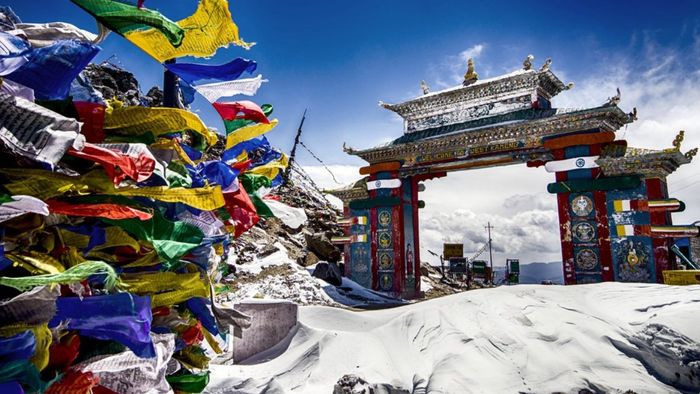Arunachal Pradesh: A Glimpse into the Diverse Tribes
Arunachal Pradesh, a northeastern state in India, is a melting pot of diverse indigenous tribes. Each tribe, with its unique traditions and practices, adds to the state's rich cultural tapestry.

- Feb 22, 2024,
- Updated Feb 22, 2024, 10:29 PM IST
Nestled in the northeastern corner of India, Arunachal Pradesh is a land of breathtaking landscapes, diverse cultures, and vibrant traditions. One of the distinctive features that make this state truly unique is its rich tapestry of indigenous tribes. Among them, the Nyishi, Adi, Apatani, Galo, Monpa, Khamti, and Tagin stand out, each contributing to the state's cultural mosaic in their own special way.
Nyishi Tribe:
The largest ethnic group in Arunachal Pradesh, the Nyishi tribe, primarily inhabits the foothills and plains of the state. Known for their colorful festivals and traditional dances, the Nyishis celebrate Nyokum Yullo as one of their major festivals. Their vibrant cultural heritage is reflected in their elaborate traditional attire, adorned with intricate beadwork and jewelry. Agriculture is a crucial part of their livelihood, and the Nyishis are skilled in terrace cultivation.
Adi Tribe:
The Adi tribe, one of the most populous tribes in Arunachal Pradesh, is scattered across the hills and valleys of the state. Renowned for their intricate handloom work and bamboo craftsmanship, the Adis have a rich cultural heritage. Solung, their main agricultural festival, is a grand celebration marked by traditional rituals, dances, and feasts. The Adis are known for their unique housing style, featuring elevated bamboo houses with thatched roofs, protecting them from the region's heavy rainfall.
Apatani Tribe:
The Apatani tribe, residing in the picturesque Ziro Valley, is recognized for its distinctive agricultural practices. Their intricate wet rice cultivation system, locally known as 'paddy cum fish culture,' is a marvel that sets them apart. Women of the Apatani tribe traditionally wear nose plugs and distinctive facial tattoos, making them easily identifiable. The Dree Festival, dedicated to the goddess of agriculture, is a major celebration among the Apatanis, featuring traditional dances, rituals, and sacrificial offerings.
Galo Tribe:
Spread across the western part of Arunachal Pradesh, the Galo tribe is known for its rich cultural heritage and traditional values. The Mopin festival, celebrated with fervor, is a highlight of their cultural calendar. The Galos are skilled in handloom and handicrafts, producing exquisite traditional attire and artifacts. Like many tribes in the region, agriculture is a vital part of their lifestyle, with rice being a staple crop.
Monpa Tribe:
In the high-altitude regions of Arunachal Pradesh, the Monpa tribe thrives, particularly in the Tawang district. The Monpas are deeply rooted in Tibetan Buddhism, and their monasteries, including the iconic Tawang Monastery, are centers of spiritual and cultural significance. Losar, their New Year festival, is a grand celebration marked by traditional dances, music, and religious rituals. The Monpas are also skilled in thangka painting, wood carving, and mask-making, showcasing their artistic talents.
Khamti Tribe:
The Khamti tribe, inhabiting the eastern part of Arunachal Pradesh, has a unique cultural identity influenced by both Indian and Southeast Asian traditions. The tribe is known for its proficiency in weaving, producing exquisite textiles adorned with intricate designs. The Khamtis celebrate festivals like Lao-Dong and Khampti-Singpho New Year with traditional dances, rituals, and communal feasts. The Khamti cuisine, featuring a variety of rice-based dishes, reflects their agrarian lifestyle.
Tagin Tribe:
The Tagin tribe, residing in the upper Subansiri district, is known for its distinct socio-cultural practices. The Tagins engage in terrace cultivation, showcasing their agricultural prowess. Their festivals, such as Mlokom Yullo and Chalo Loku, are celebrated with great enthusiasm, featuring traditional dances, rituals, and community gatherings. The Tagin people take pride in their traditional attire, adorned with beads, shells, and vibrant colors.
Arunachal Pradesh's cultural tapestry is woven intricately by these diverse tribes, each contributing its unique hues to the vibrant canvas of the state. The traditions, festivals, and lifestyles of the Nyishi, Adi, Apatani, Galo, Monpa, Khamti, and Tagin tribes exemplify the rich cultural diversity that makes Arunachal Pradesh a fascinating and enchanting destination. As we celebrate this diversity, it is crucial to recognize and preserve the unique heritage of each tribe, ensuring that their traditions continue to flourish for generations to come.